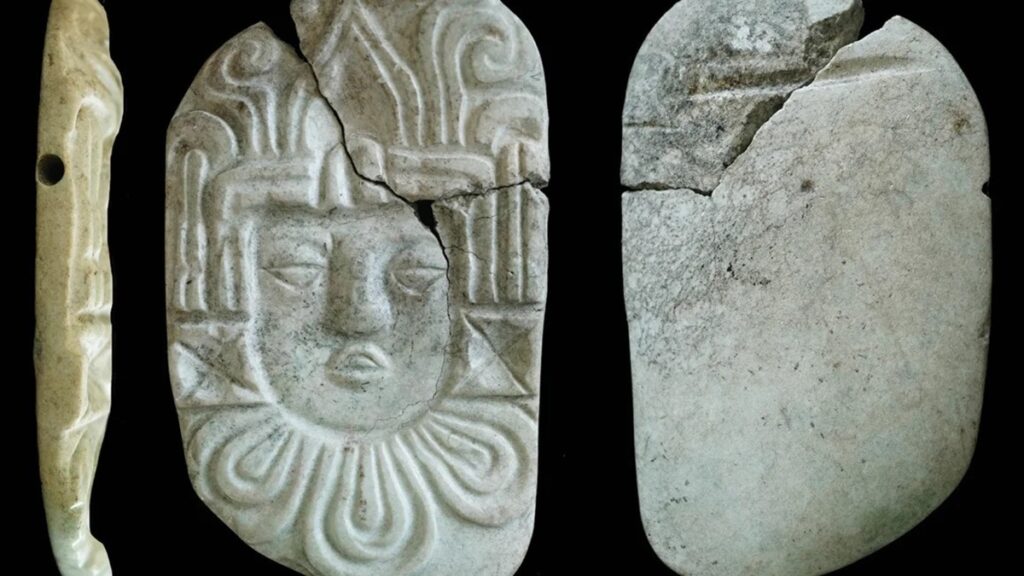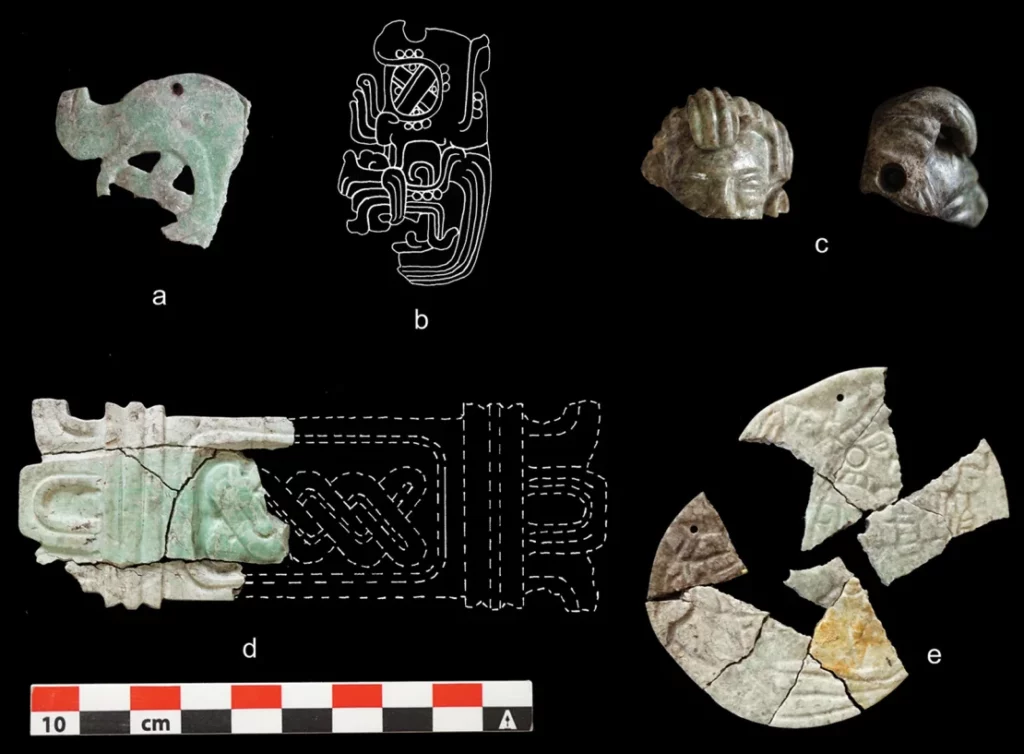
In the depths of an ancient Maya pyramid and temple in Guatemala, archaeologists have made a startling discovery. Scorched bones believed to belong to royalty and burned rare artifacts hint at a ceremonial desecration linked to a significant political upheaval in the distant past. The remains were discarded within the foundations of the temple, which was still under construction at the time of the dramatic event.
Researchers believe this sacrilege is linked to the rise of a transformative Maya leader sometime around 1,200 years ago.
Transition through fire
At the archaeological site of Ucanal, a team led by Christina Halperin at the University of Montreal unexpectedly found the charred deposit beneath a pyramid temple structure. They found bones from at least four people, along with thousands of ornamental greenstones, shell beads, pendants made of mammal teeth, and various weapons — items that indicate high status.
It became clear that the human remains belonged to royalty when, after hours of sifting through ash, the archaeologists found the nosepiece and obsidian eye discs of a burial mask.
Some of the bones and beads exhibit evidence of high-temperature combustion. This suggests everything was piled up and set ablaze — which is notable because Maya royalty was never cremated.
Like the Egyptians, the remains of the Mayan elites were laid inside inaccessible tombs. But what archaeologists found at Ucanal looks more like a dump hastily covered with debris rather than a ceremonial tomb.
The intense heat required to cause the observed damage to the bones suggests a massive inferno, possibly exceeding 1,472 degrees Fahrenheit.
A new ruler marks a new era

According to radiocarbon dating, the event took place between 773 and 881 AD. This dramatic ritual appears to coincide with the emergence of a leader named Papmalil, notable for his unusual title, “ochk’in kaloomte,” or “western overlord”. This is unusual, the researchers say, because Maya leadership rarely came from the military.
Halperin believes that what Papmalil did was a “fire-entering rite”, a ritual that marks the end of a previous dynasty and the birth of new leadership. The remains were probably removed from a tomb and burned in public for all to see. After the fire, the charred bones and artifacts would have been dumped in the temple pyramid, cementing Papmalil’s ascension to power.
Around this time, Papmalil’s new regime dismantled old monuments, ordered new public buildings built, and formed new political alliances.
“We know so little about the politics that are happening during this time, and so it’s an important event that helps us recognize a political transition. It really emphasizes that yes, political dynasties collapsed. But there’s also renewal and a reworking of a society in different areas of the Maya world,” Halperin said.
The discovery at Ucanal, once the bustling capital of the Maya’s K’anwitznal kingdom, not only highlights the dynamic nature of Maya political life but also emphasizes the continuity and resilience of Maya society through periods of profound change. Finding such direct evidence of political and social transformation is incredibly rare and valuable in understanding the evolution of Maya culture, conclude the researchers.
The findings were reported in the journal Antiquity.









